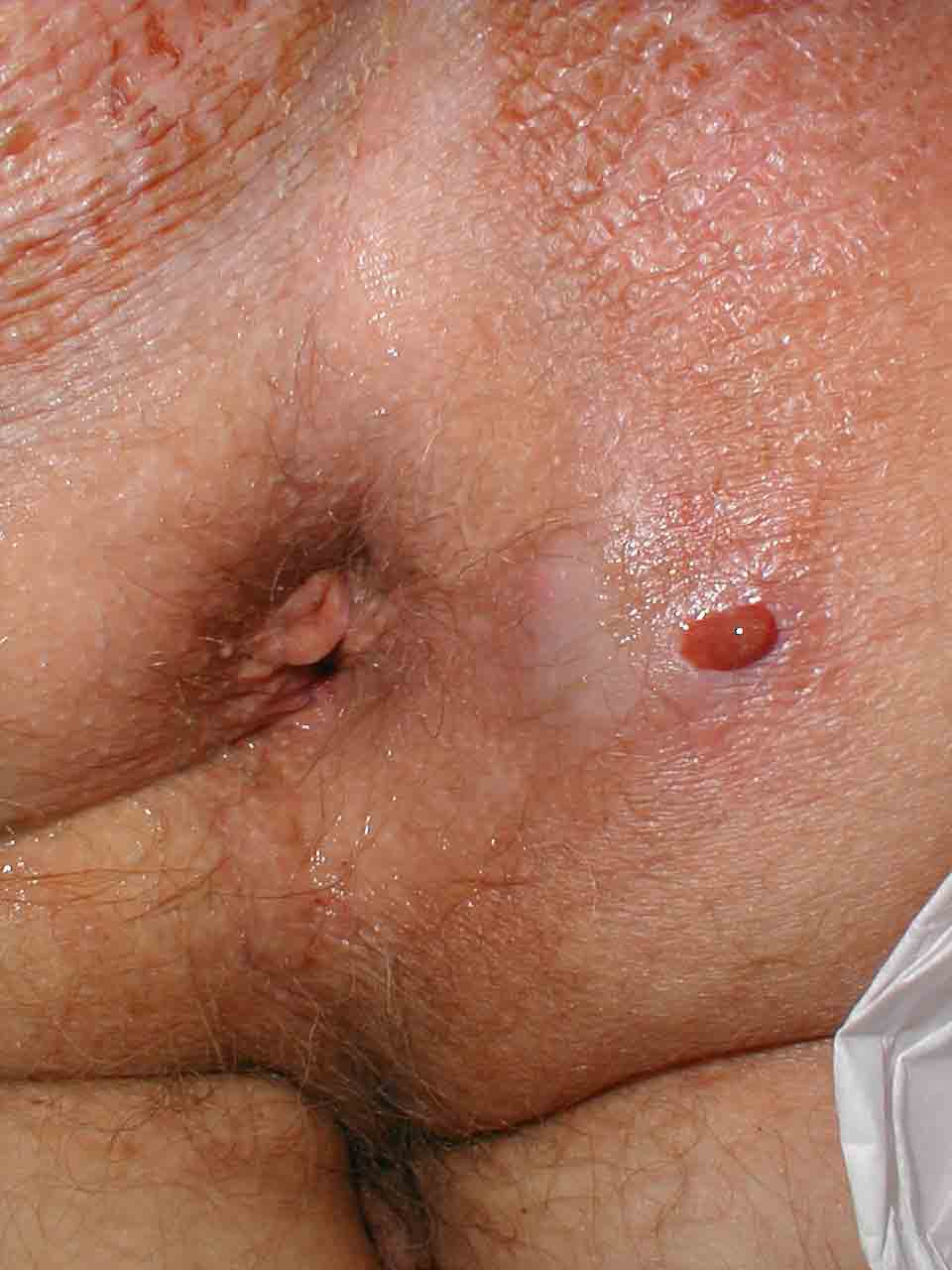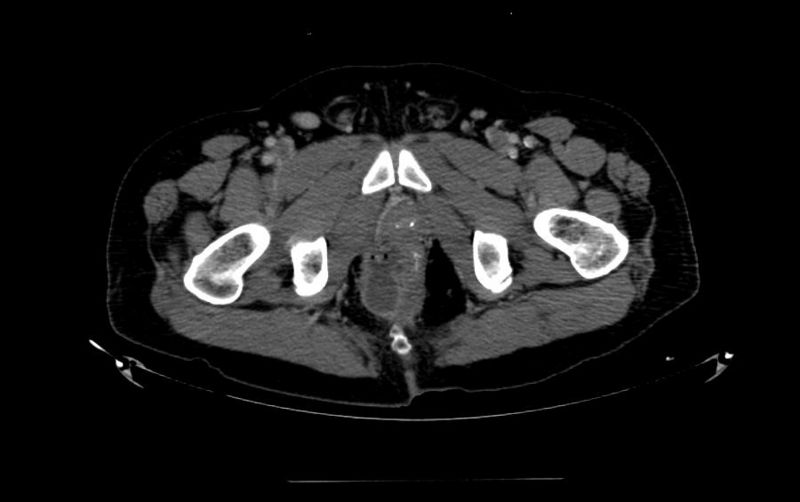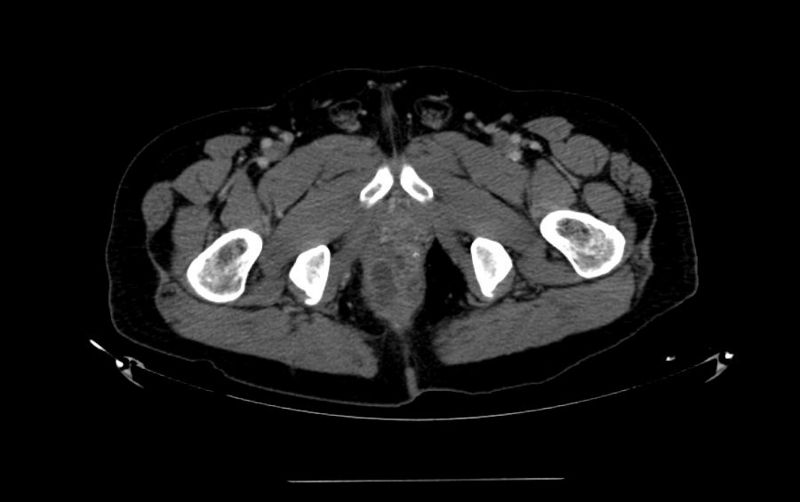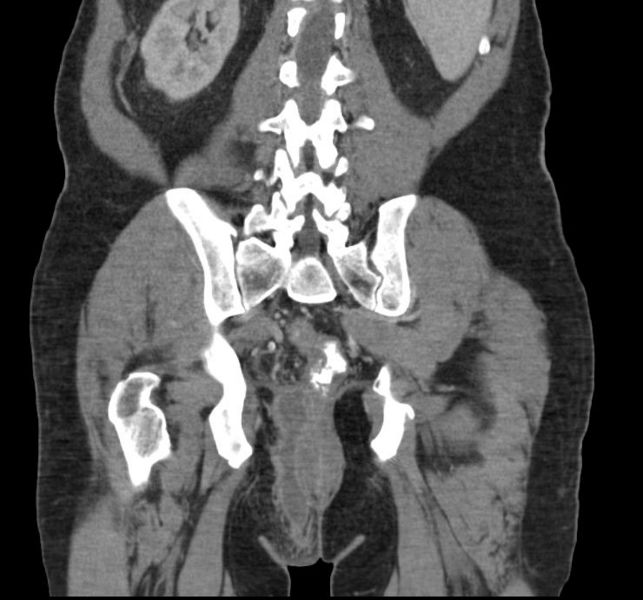Perianal abscess
| Perianal abscess | |
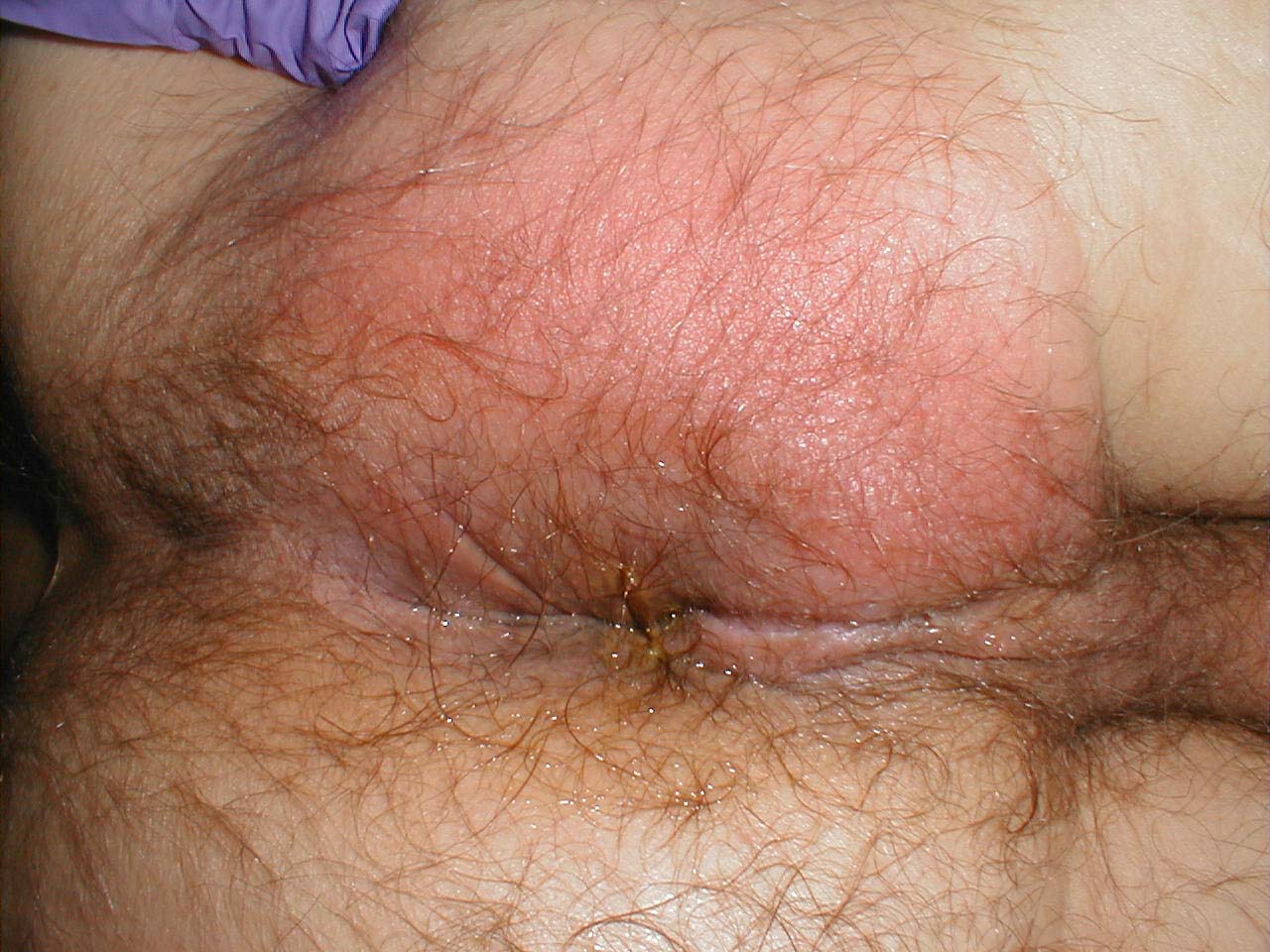 | |
|---|---|
| Perianal abscess. (Image courtesy of Charlie Goldberg, M.D., UCSD School of Medicine and VA Medical Center, San Diego, CA) |
Editor-In-Chief: C. Michael Gibson, M.S., M.D. [1]
Etiology and Pathogenesis
Diagnosis
Imaging studies which can help determine the diagnosis in cases of a deep non-palpable perirectal abscess include pelvic CT scan, MRI or trans-rectal ultrasound. (Images courtesy of Charlie Goldberg, M.D., UCSD School of Medicine and VA Medical Center, San Diego, CA)
CT demonstrates a perirectal abscess that extends to the skin
Treatment
Treatment of perianal abscesses include examination under anesthesia (regional or general), incision and drainage of the pus. Antibiotics to cover rectal flora (and not skin flora) should be prescribed perioperatively. An anorectal abscess that is untreated or not fully drained can get worse and cause a severe local or systemic infection which can be life-threatening (Fornier's gangrane or sepsis). On the long run, a perianal fistula can arise from the abscess cavity - an abnormal tract that connects the rectum and the external perianal region.
After successful treatment and recovery, a person can generally return to normal activities. However, someone with inflammatory bowel disease often needs lifelong monitoring by a healthcare provider. Any new or worsening symptoms should be reported to the healthcare provider.
Complications
- Anal fistula formation
- Recurrence
- Scarring
- Systemic infection
